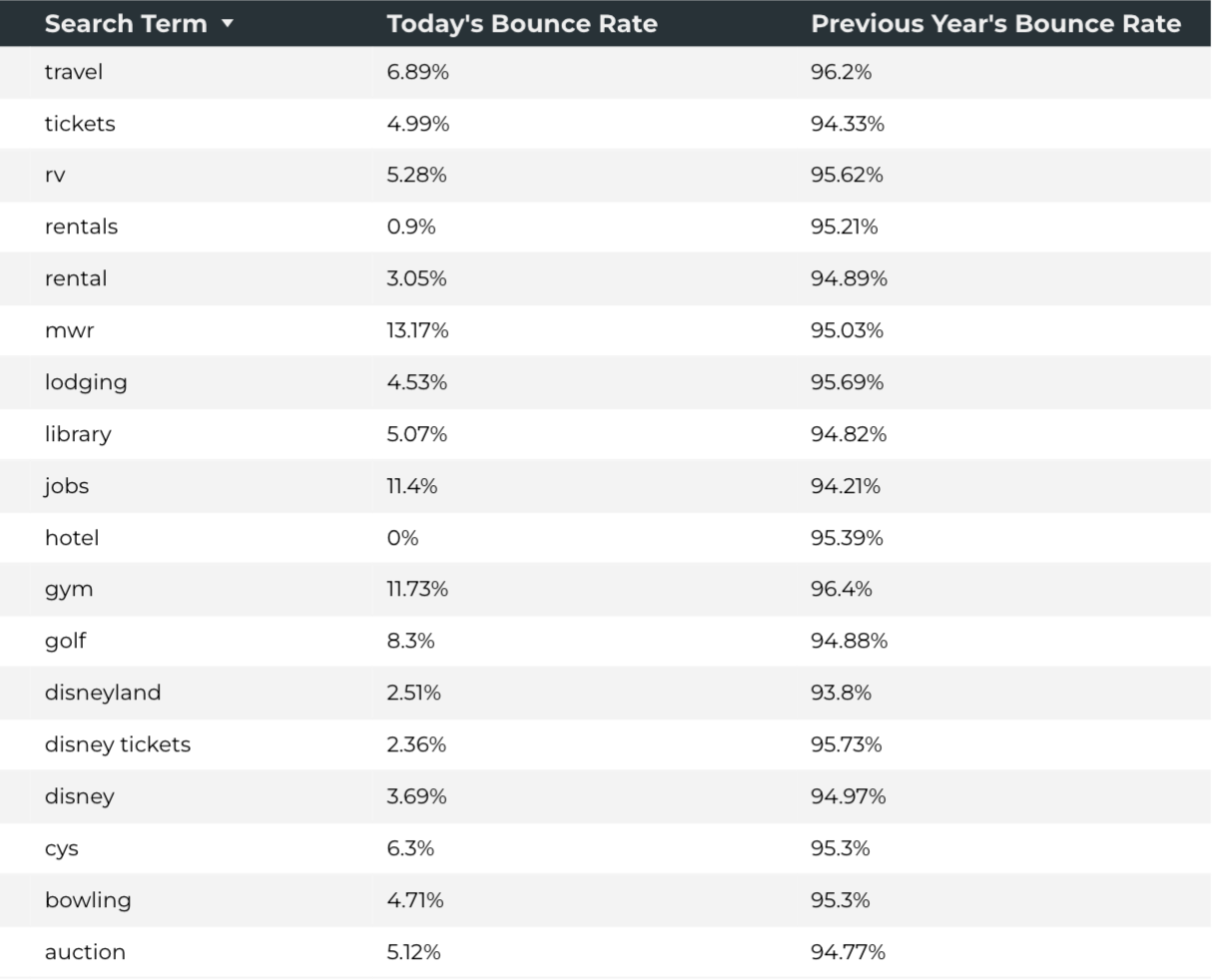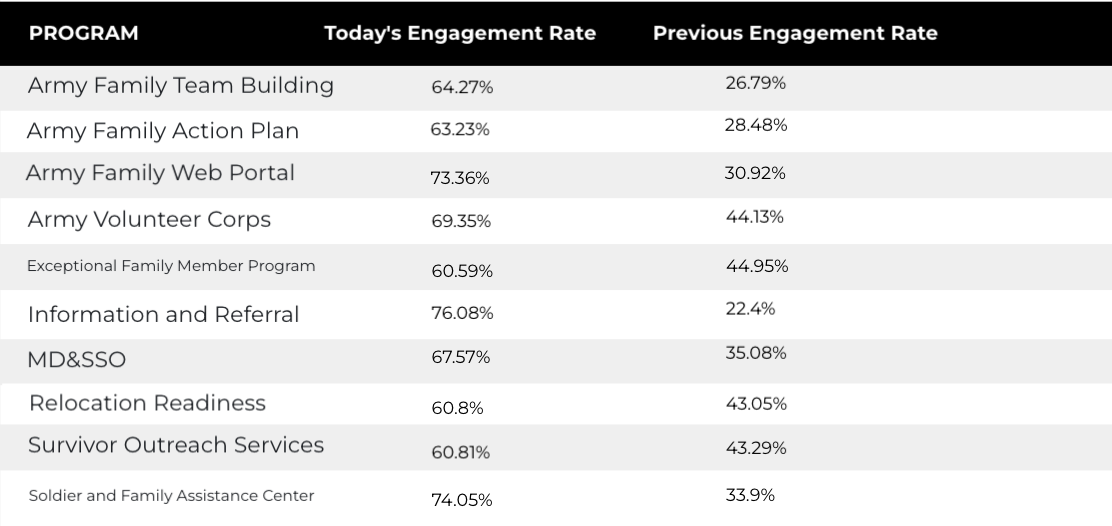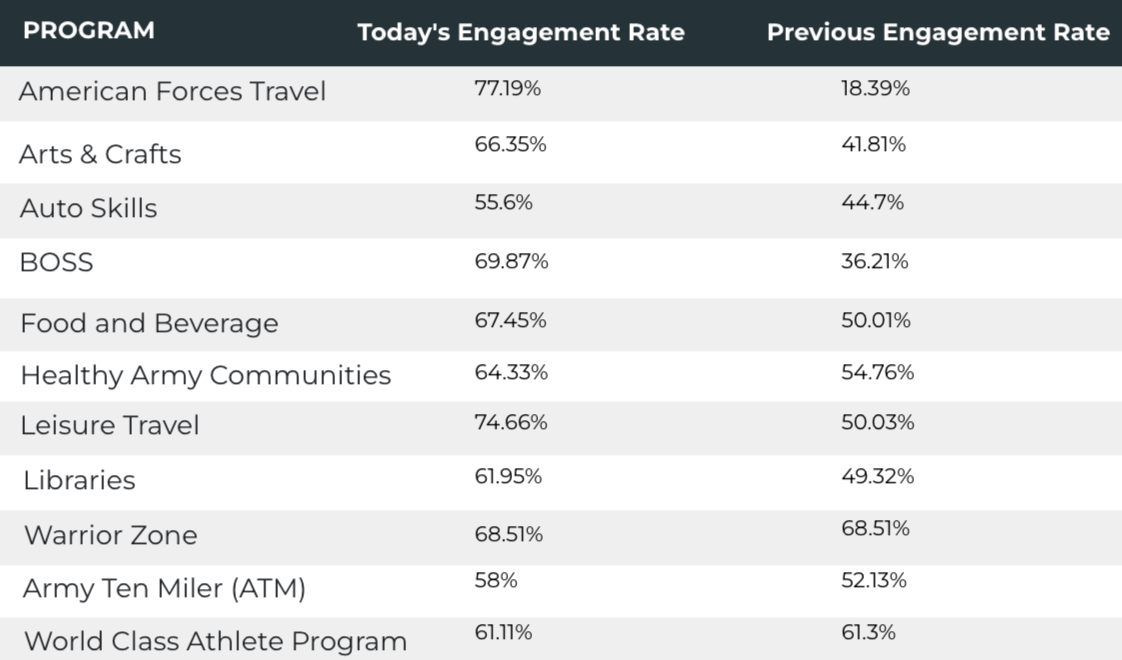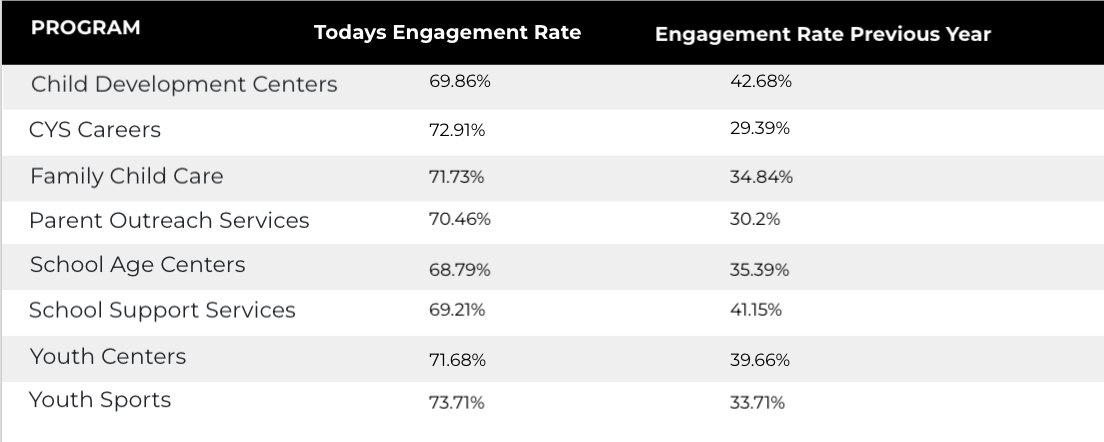EPW Search Improvement
Figure 1: Evolution of User Engagement Rate Before and After Implementing Enhanced Search Capabilities
Situation
The U.S. Army Family and MWR websites encountered a significant challenge regarding their on-site search functionality. Despite a substantial user base, the search feature's effectiveness was in question. Most people who use this search tool aren't finding what they're looking for. We know this because 84 out of every 100 people leave the website quickly after trying to search for something. This is what we call a 'bounce rate.' Think of it as someone walking into a real library, asking the librarian a question, and then walking out immediately because they didn't get the help they needed.
Impact
Users on garrison sites struggled to access critical and comprehensive information from the HQ site, while searches on the HQ site were consistently cluttered with garrison-specific content. This overlap not only diluted the relevance of search results but also buried crucial HQ information.
The prevalent use of military jargon and acronyms formed additional barriers to effective information retrieval, leading to a frustrating user experience and the potential loss of valuable engagement opportunities. Compounding these challenges was the system's inability to customize search results for commonly searched terms, such as "Disney." This lack of control over search outcomes likely resulted in missed opportunities to direct users to the most relevant and beneficial content, possibly affecting both user satisfaction and revenue generation.
Resolution
After examining traffic patterns and the existing solution, the following key points were identified:
- Garrison sites did not always contain standard content from the HQ site.
- HQ search was saturated with garrison content, lacking prioritization for HQ-specific content.
- Difficulty in navigating synonyms and acronyms, leading to missed content.
- Lack of control for specific search terms.
To address these challenges, the following features were implemented:
- Garrison site searches were enhanced to include results from the HQ site, with an option to disable HQ results if desired.
- Search results on the HQ site were adjusted to prioritize HQ content before showing garrison results.
- AI technology was employed to build lists of synonyms for common topics and acronyms improving the relevance of search results.
- A new interface was created for HQ administrators to link specific search terms to pin to particular search queries, ensuring that the most relevant content is displayed prominently for popular keywords.
Outcome
The implementation of these solutions led to a significant improvement in the search experience on the US Army MWR websites. Users were able to access more relevant and comprehensive content, leading to increased satisfaction and engagement. The use of AI for synonym and acronym generation and the ability to create specific search terms to results greatly enhanced the accuracy and usefulness of the search function.
These solutions led to a substantial improvement in the search experience:
- The average bounce rate after a user makes a search drastically decreased from 94.89% to 3.29%.
- Engagement Rates increased over 34%
- The decrease of -8,797 searches compared to the previous year might initially appear concerning. However, when contextualized with other metrics, particularly the dramatic decrease in the bounce rate, this reduction in search numbers can be interpreted positively. This decline in the number of searches could be attributed to users finding the information they need more quickly and accurately, thus reducing the need for multiple searches.
Table 1: Comparison of Current and Previous Year's Bounce Rates by Search Term

ACS
With the new search functionality, users are now more likely to find relevant and targeted content that matches their search intent. This increased relevance leads to a higher likelihood of users engaging with the program pages they land on because the content aligns with what they were seeking.
Table 2: Comparison of Current and Previous Engagement Rates for ACS Programs
BRD
Enhanced Relevance of Search Results: With the new search functionality, users are now more likely to find relevant and targeted content that matches their search intent. This increased relevance leads to a higher likelihood of users engaging with the program pages they land on because the content aligns with what they were seeking.
Table 3: Comparison of Current and Previous Engagement Rates for BRD Programs

CYS
Enhanced Relevance of Search Results: With the new search functionality, users are now more likely to find relevant and targeted content that matches their search intent. This increased relevance leads to a higher likelihood of users engaging with the program pages they land on because the content aligns with what they were seeking.
Table 3: Comparison of Current and Previous Engagement Rates for CYS Programs
